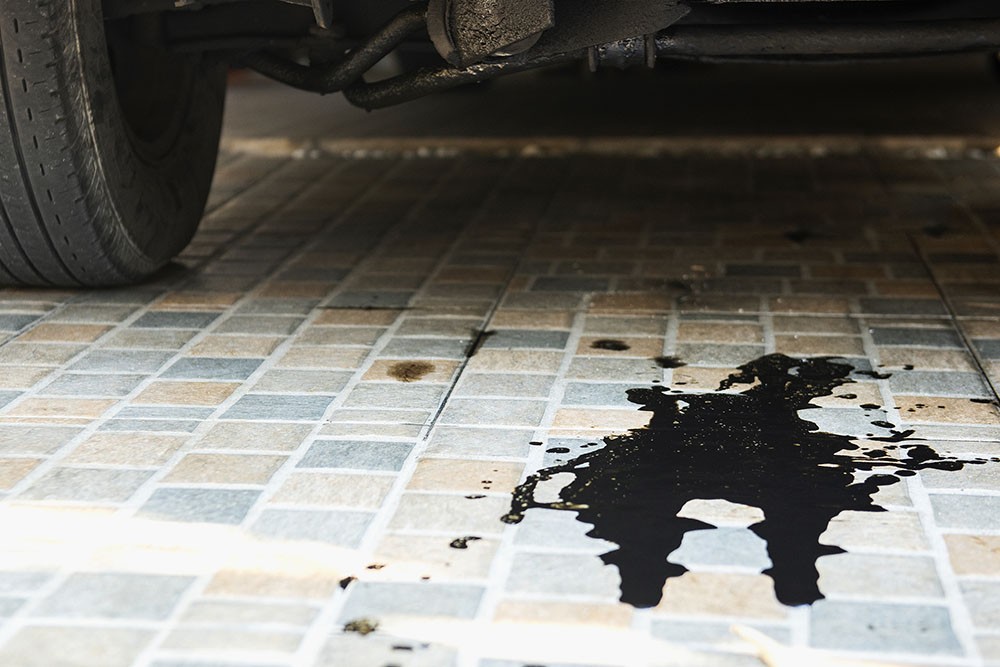Don’t Let Those Little Leaks Turn Into Big Problems

Are you seeing any spots underneath your vehicle as you drive off in the morning? Those little drips and leaks that may have gone unnoticed in winter can “suddenly” appear in spring.
Don’t ignore them. They could be a hazard and sign of trouble.
“I’m a fanatic about leaks,” said Tony Molla of the Automotive Service Association. “Whenever I see a spot I take it into the service center immediately.
“An oil leak is one of the most serious kinds of leaks because it could cause serious damage to your vehicle’s engine if ignored. It’s not just bad for the environment, over time, it can slowly lower the oil level in your engine to the point where you’ll have a problem.”
In contrast, water spots underneath your vehicle may indicate condensation dripping off of the air conditioning system. That doesn’t mean you should ignore it, however.
“You should always ask your service advisor to inspect any fluid leak,” Molla said. “Don’t wait for the warning light to come on; it could be too late to prevent damage.”
For Molla, opening the hood of his vehicles offers one of the best ways to perform a quick check for leaks. He looks around the top of the engine, along hoses, underneath the engine compartment and near the oil pan.
“Every once in a while you really need to open the hood,” Molla said. “I’m guilty of that myself.”
Molla’s lifetime of experience as an ASE-Certified mechanic and automotive service expert tells him most people never check fluid levels. Drivers typically wait until their next oil change and hope a mechanic will spot potential problems, he said.
Yet, costly repairs may be avoided by identifying problems early.
“If you see anything take it to your service advisor and get it checked out,” Molla said. “If an oil warning light flashes, for example, pull over in a safe area, turn off the engine and call for help.
“The most important tool you can have in your car is a cell phone.”
Fluid Leaks Color Guide
The color and location of leaks and drips offer a clue on its origins. All leaks are serious and should be inspected immediately.
A special warning for animal lovers: Vehicle leaks are toxic and some are deadly. Some fluids-- like engine coolant--have a sweet taste that attracts animals. Clean up leaks immediately to prevent pets from ingesting them.
Here are some of the common types of leaks and drips:
Black or brown, greasy: Usually indicates an oil leak, near the front of the vehicle.
Pink, orange or green: This may be radiator fluid, especially if it is near the front of the vehicle, transmission fluid is reddish in color and usually appears in the front or center of the vehicle. On rear-drive vehicles, differential fluid leaks will be toward the rear.
Light brown: May be brake fluid or power steering fluid. Brake fluid often accumulates near the tires.
Clear, thin and heavy odor: This could indicate a gasoline leak.
Bright bluish, other bright color, thin: This may indicate windshield wiper fluid.
Water: Possibly condensation drips from the air conditioning system.
Fluid Leak Severity Chart
What are the critical signs let you know it's time to have a certified mechanic inspect your vehicle?
The following chart is a general guideline. Call your advisor If you see any of the following signs.
|
What you see |
Severity |
Recommendation |
|
Pouring |
5 |
Fluid flows from vehicle. Vehicle should not be driven. Fix immediately. |
|
Leaking |
4 |
Puddles form. Fix now. |
|
Seeping |
3 |
Drips come off the vehicle and pool underneath. Fix soon. |
|
Wet |
2 |
Fluid is not dripping. Watch carefully and determine if the problem is getting worse. |
|
Stain |
1 |
Looks like a fogged mirror. Watch carefully and determine if the problem is getting worse. |